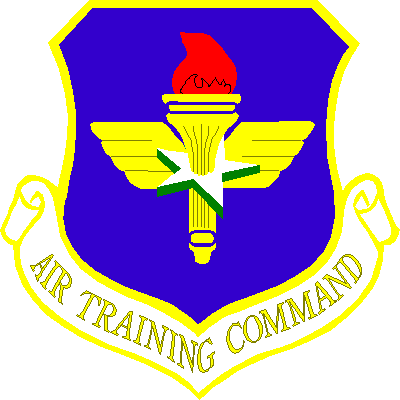 |
 UPT Phase II...
|
 |
 UPT Phase II...
|
![]()
![]()
All but a few of us made the first cut and moved to the Cessna T-37B aircraft, where we would spend the next four months learning the fundamentals of flying, acrobatics, instrument, and formation flying. The T-37 has the official Air Force name of "Tweet". "Tweet" is something of an understatement. We all called it the "6000 pound dog whistle". In any case, its name derived from the sound of its engines, which used centrifugal compressors, unlike the axial compressors we are familiar with in most modern jet aircraft. The noise of these beasts was a deafening high frequency screech which I am sure is the root cause the high-frequency hearing loss I have noticed in later life. We carried a full academic and physical training schedule and flew every working day by starting at 5:00 AM and running until about 6:00 PM.
As an aside, the Air Force has a training tradition in which your first ride in a new aircraft type is just that - a ride. You are not responsible for anything other than how to operate the emergency egress system and your instructor will perform any maneuver you wish to see. This ride is called the "dollar ride" because, by tradition, you pay the instructor one dollar for his chauffeur services at the end.
My dollar ride was a good one. Things seem to be moving a little faster than I could cope with them, although the T-37 is not exactly a stellar performer - but rather a competent and forgiving fully acrobatic trainer. I even asked my Instructor Pilot (IP) to perform a fully-developed spin and survived with my lunch intact. From that point on, things went downhill for a while. The demands placed on the student are aggressive and unrelenting. As soon as one objective is achieved, more are held out as goals. The transformation from civilian to military pilot takes place gradually and almost unnoticed by the trainee. Finally one day the IP has you make a full stop landing and taxi to a hardstand at the side of the runway. He opens the canopy, unbuckles, shakes your hand, says "good luck", and climbs out. You have finally achieved "first solo" status. There is probably no moment of more mixed emotions than this one. The Air Force has decided that it will allow you to take its very expensive airplane and burn its very expensive fuel and practice hurtling your young, pink body at the ground all by yourself. The first few trips around the traffic pattern are a little tentative, but it is not long before everyone looks forward to contact (visual) solo rides.
The repertoire of aircraft maneuvers is greatly expanded in the T-37. We learn how to do the immelman, split s, loops, barrel rolls, and aileron rolls. We also take the stall training into fully developed spins, both erect and inverted and learn how to recover quickly and instinctively. It is in the T-37 that we start the uniquely military experience of formation flying.
Each pair of students had an assigned instructor with whom we did almost all of our flying. These gentlemen are superb aviators and generally have the patience required of sainthood. My T-37 instructor was Captain Denny Lucido. I didn't quite drive Denny to drink, but I tried my best!
| T-37 Pictures | |
|---|---|
 Single Ship |
 Four Ship Formation |
 On the ramp |
 Cockpit View |